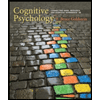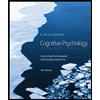anxiety intervention.edited (1)
docx
keyboard_arrow_up
School
Alfred State College *
*We aren’t endorsed by this school
Course
1114
Subject
Psychology
Date
Nov 24, 2024
Type
docx
Pages
22
Uploaded by PresidentMaskPuppy23
[Date]
Author Name
INSTITUTION NAME
Anxiety and
Panic Attack
Intervention
Program at
Cardiff
Metropolitan
University
An evidence Based Report
P a g e
|
1
Intervention for Anxiety and Panic Attacks
Introduction
This report has been written with a focus on the Cardiff Metropolitan University. It is
targeted towards the student health and well-being department and the university and any other
organization responsible for addressing public health issues, especially mental health issues with
a focus on students. Students, especially university students remain among the largest
populations with a greater risk of developing mental health issues because owing to the plethora
of circumstances that cause these problems. Hence, this report will provide an evidence-based
strategy for the implementation of an Anxiety and Panic Attack intervention among the students
of Cardiff Metropolitan University. It is important to note that this implementation strategy is a
standard report that can be applied not only with Cardiff Metropolitan University Students but
other individuals of the same age bracket as well. Within the report, an explanation of the issues
this intervention will target is also provided. Thus, this document will entail a case of action
summary, a proposed intervention approach, key partners for the intervention, community
engagement strategies, a detailed project plan as well as an evaluation o the effectiveness of this
approach.
Case of action
Before the development of this intervention report, a summary scoping paper was
provided. The summary scope paper intended to demonstrate analysis and summary of health
needs pertaining to community health and sustainable development. However, the main point of
focus was the Cardiff Metropolitan University and the health of the students enrolled in the
university. The summary scope paper highlighted the issues suffered by students in order of their
P a g e
|
2
demands and their requests for assistance. From the health report, it was determined that the
majority of the students’ requests for support came from either disability issues and mental health
problems. These two main aspects were taken into consideration during the planning and
development of this intervention report. It was also noted that a large percentage of individuals
who reported wanting support were females at 69 percent compared to male students at 31
percent.
The information from the summary scoping paper shows that a large number of students
at the University are troubled by their disability issues as well as mental health problems. This
discovery narrowed down the focus allowing for this intervention to be structured towards a
single issue of utmost importance. One of the issues this report noted was the high numbers in
requests for assistance to issues highly linked with anxiety and panic attacks. For this reason, the
disability requests were set aside to focus on issues linked with anxiety and panic attacks. The
reason this was narrowed down in this manner is the fact that mental health issues continue to
cause a plethora of issues and outcomes that affect society as a whole. Even disability problems
are linked with issues that affect the mental health of an individual. Disability with lack of proper
counselling and guidance can result in stress and depression, addiction problems, self-harm,
anxiety among other things. Therefore, the decision to focus on anxiety and panic attacks is well
justified in this intervention report.
Furthermore, it has already been mentioned that a large number of requests were linked to
anxiety and panic attacks among students. For instance, the number of students who requested
help in relation to depression and stress, personal relationship issues, sexual abuse, study issues,
addiction, traumatic experiences, loneliness, emotional health, and loss cover almost 95 percent
of support reasons commonly provided. All these issues can cause anxiety and panic attacks or
Your preview ends here
Eager to read complete document? Join bartleby learn and gain access to the full version
- Access to all documents
- Unlimited textbook solutions
- 24/7 expert homework help
P a g e
|
3
stem from anxiety and panic attacks. Because of this interrelationship, the best approach would
be to tackle anxiety and panic attacks as a point of intervention. The Cardiff Metropolitan
University already has a support team focused on disability and counseling of students. These
individuals would act as the pillars towards the establishment of a program meant to assist
students to find ways of dealing with anxiety issues and panic attacks without such issues leading
to severe repercussions.
To justify the need for an intervention focused on anxiety and panic attacks, it is
important to review literature that shows the importance of dealing with this matter. Anxiety is a
common feeling that every individual has experienced over and over throughout his/her lifetime.
However, while normal anxiety acts as a reaction towards unexpected outcomes or a threatening
situation, extreme levels of anxiety or anxiety disorders lead to disruptions in the way individuals
operate (Caldwell et al., 2019). Therefore, there is a need to assist individuals who experience
extreme levels of anxiety that are considered as disorders. Anxiety and panic also go together,
considering that when one is anxious, they are likely to enter a panic mode. However, adverse
levels of panic also result in panic disorders that involve constant panic attacks (Werner-Seidler
et al., 2017). Basically, a feeling of anxiety can be accompanied by panic and feelings of stress
all at once as they are said to occur regularly as a mix (Werner-Seidler et al., 2017).
While they can occur together or separately, they also have separate signs or conditions
that lead to them occurring. However, these issues can also be considered as the basis for the
development of other extreme mental health issues such as depression, substance abuse, self-
harm, suicide, eating disorders, loneliness among other things (Haugland et al., 2017).
Additionally, some of these mentioned issues can occur first leading to the development of
P a g e
|
4
anxiety and panic. For this reason, the importance of addressing anxiety and panic among the
university students of Cardiff Metropolitan University is apparent.
Proposed interventions
Education programs on anxiety for all students.
One of the main reasons mental health issues are affecting a large number of
communities is the lack of awareness towards such issues (Haug et al, 2016). For this reason, the
go unnoticed or neglected within a large number of societies. Furthermore, the stigma that comes
with being branded as an individual suffering from a mental problem is a huge deterrent
preventing the identification and treatment of mental cases that could have gotten resolved if
detected at an earlier stage (Morgan, Rapee and Bayer, 2016). The American Psychiatric
Association is among the biggest Psychiatric associations across the globe and it had determined
that mental issues are currently affecting societies because of the lack of proper sensitization.
Individuals do not have the knowledge of understanding mental issues and the fact that they
occur in variety and very in implications and severity (Morgan, Rapee and Bayer, 2016). Thus,
once people learn the difference between the wide variety of mental issues, then they can begin
to understand the need for seeking help.
In this case, stigma and fear of getting marginalized as an individual with mental health
problems is a huge fear exhibited by a large number of youths, especially university students.
These individuals are also highly sensitive to their social outlook. Hence, the reason for this
educational program as an interventional measure is to educate students of mental health issues,
types of these issues and how best to manage them. Anxiety will be the main focus and students
will be taught how to deal with varying levels of anxiety and seek help when they feel like their
conditions are evolving into serious cases of anxiety. The idea is to make students feel free to
P a g e
|
5
talk about their issues instead of bottling them. The plan is also to embed these lessons to all
student courses if possible.
Manualized/ computerized psychological and psychoeducational programs
This category of interventions covers a large section of the entire intervention program as
it involves the application of different sets of psychotherapeutic approaches to dealing with
anxiety. Research shows that therapeutic interventions for certain mental health-related issues
such as depression, anxiety, eating disorders and post-traumatic health disorders have better
outcomes (Haug et al, 2016). Considering the case of anxiety and panic attacks among students
at Cardiff Metropolitan University, the idea is to design and implement different types of
interventions at different levels. These interventions will be established as a manual or face to
face interactions with counsellors or computerized interactions for students who do not feel
comfortable addressing their issues directly. Cognitive Behavioral Therapy is the primary
intervention that will be utilized. Its application is renowned for its ability to tackle a wide
variety of personal issues such as anxiety, anger, depression, addiction, panic disorders, eating
disorders among others
(Tozzi, Nicolaidou, Galani and Antoniades, 2018).
Furthermore, other intervention programs that will be developed will include
interpersonal psychotherapy. This kind of therapy is significant in this case because it is an
attachment-focused kind of therapy (Tozzi, Nicolaidou, Galani and Antoniades, 2018). It will be
significant in solving anxiety issues and panic attacks among students as it also uses
symptomatic recovery (Werner-Seidler et al., 2017). Considering anxiety and panic attacks are
affects an individual’s ability to remain relaxed, calm and collected, the idea is also to introduce
a mindfulness-based cognitive therapy. This is slightly different from the normal CBT approach
as it focuses on the mixing of CBT methods with mindfulness meditative practices (Werner-
Your preview ends here
Eager to read complete document? Join bartleby learn and gain access to the full version
- Access to all documents
- Unlimited textbook solutions
- 24/7 expert homework help
P a g e
|
6
Seidler et al., 2017). It will assist in helping a wide variety of students who experience panic
attacks more due to anxiety build up. Another approach developed by Carol D. Ryff is the well-
being-enhancing psychotherapeutic strategy shortened as the well-being therapy. This is also a
significant approach that focused on the multi-dimensional model of psychological well-being
and it can be extremely significant in managing anxiety and panic attack issues (Fava, 1999). The
above-mentioned approaches will be combined with psycho-educational approaches to enhance
the impact of these set of interventions.
Furthermore, these interventions could have been divided as single forms of interventions
but they serve as a group of psychological interventions to dealing with anxiety issues. The
interventions will also be planned and structured to assist students depending on their symptoms
of anxiety and panic attacks and the frequency of occurrence of these instances or feelings. The
expected outcomes are promising in relation to previous literature reviews conducted regarding
mental health issues such as anxiety and panic attacks.
SMART Objectives
From the above-proposed intervention actions, there are a number of objectives that were
developed to follow up on the progress of these interventions. These objectives were specific,
measurable, achievable, realistic and time-bound in order to make it easy to track the
effectiveness of the proposed interventions.
To increase the sensitization of students to anxiety-related issues with the aim of
increasing the number of male students who report their issues by 10 percent in 3 months.
P a g e
|
7
To reduce the total number of counselling cases reported cases that are linked to anxiety
by 15 percent within a period of four months from the onset of the proposed
interventions.
To increase the number of students attending mental healthcare seminars and programs
by 30 percent in a period of 4 months.
To reduce the number of identified students suffering from social anxiety by 25 percent in
a period of 6 months from the launch of the proposed intervention programs.
Increase the number of students reporting or calling when feeling overwhelmed or
entering a state of severe anxiety or panic by 10 percent in a period of 3 months from the
launch of the intervention programs.
To reduce the number of students reported using pharmacological interventions (these are
mainly categorized in three, that is, antidepressants, benzodiazepines and
anticonvulsants) to assist in their management of anxiety by 15 percent in a period of 4
months from the launch of the program.
Establish weekly meetings for students suffering from severe anxiety issues to check on
their progress and how they are faring on. Students will provide reports on their weekly
cases of anxiety or panic attacks.
Establish a website and application software that student can use to interact and
encourage each other to reduce cases of students making the wrong decisions when faced
with anxiety or panic attacks.
Train students and other interested staff members to provide primary assistance to
students facing panic and anxiety attacks before they can be linked with a professional.
P a g e
|
8
Establish a volunteer program for a student mental health care awareness club to increase
the awareness of mental health issues suffered by the youth.
Outputs, Outcomes and Impacts
From the objectives of the intervention program, a successful intervention should manage to
achieve the following.
Outputs
•
Provision of a stable environment for students to speak about their mental health issues
and receive help as required.
•
Increasing awareness of taking care of oneself to increase overall mental health care.
•
Provide students with self-care and mental care routines and programs to increase their
overall health.
•
Train students and interested staff members in assisting those suffering from mental
health issues.
•
provide information on anxiety and panic handling techniques for self-response to
anxiety situations
Outcome
•
Improved student awareness of mental health issues.
•
Increasing the number of students reporting mental issues when faced with mental health
troubles.
•
Increased number of students willing to participate in generating awareness towards
anxiety, panic disorders and other mental health issues.
Impacts
•
Improve the mental health status of students.
Your preview ends here
Eager to read complete document? Join bartleby learn and gain access to the full version
- Access to all documents
- Unlimited textbook solutions
- 24/7 expert homework help
P a g e
|
9
•
A reduction in the reporting of mental health issues linked to anxiety and panic attacks
•
Reduce the number of severe cases of mental health impacts such as self-harm and
suicide.
•
Improve self-care practices contingent to maintain proper mental health, for example,
regular exercising.
Key Partners
For this intervention program to be successful, there are key stakeholders and other
parties interesting in forming partnerships that must be engaged. These individuals will be
significant in the development process of this intervention and will also be vital in ensuring that
all the objectives of this program are realized. A table has been provided below to identify the
key parties to assist in the delivery of this intervention. The table will also show their levels of
power and interest in this project.
Table 1: Key partners
Level of Power
High
-
National Government
-
The Cardiff Metropolitan
University
-
Mental health professionals
-
Mental health facilities
-
Other healthcare professionals
Low
-
Charity organizations
-
Students
-
School Staff
-
-
Community members
-
Community leaders.
Low
High
Interest
P a g e
|
10
Managing of Stakeholders
Figure1: managing Stakeholders (Warner, 2019)
P a g e
|
11
Community Engagement Strategies
When it comes to public health interventions, community engagement is of utmost
importance. Even though this intervention primarily focuses on a single school, these individuals
are part of the community when they are outside school. Hence, this justifies the need for
community engagement in this intervention program. The community is generally concerned
with the well-being of all the individuals who make up a specific community. A combination of
different communities makes up a society. Therefore, whether the individuals targeted by this
intervention are primarily the student of the Cardiff Metropolitan University, they are significant
contributors to the community and the society at large. The reason community engagement is a
significant part of developing interventions is that it allows a wide range of professionals to
combine efforts and work towards the desired outcome. In this case, the goal is to assist students
prone to anxiety and panic attack issues. The wide range of professionals involved should also be
able to work with the public to achieve this common goal.
The public is an important part of this intervention program because they are the people who
will be at the frontline in examining the outcomes of this intervention. They will also be the
people ready to ask questions regarding the eligibility of this program and share their concerns
regarding issues they feel should be addressed. Therefore, effectively engaging the members of
the Cardiff community throughout this intervention will assist them in understanding the reason
for this program and the expected outcomes. Engaging them should also work to ensure they
understand the risk that mental health issues such as anxiety, panic attacks, depression among
other things pose on the society at large(). Therefore, the Cardiff community will understand the
need to address this matter directly from where it is most prominent and that is in the youth,
especially university students.
Your preview ends here
Eager to read complete document? Join bartleby learn and gain access to the full version
- Access to all documents
- Unlimited textbook solutions
- 24/7 expert homework help
P a g e
|
12
It remains evident that mental health issues are a big problem in a lot of communities.
Additionally, people remain afraid of coming out and expressing themselves whenever they feel
mentally troubled to avoid the stigma that comes with admitting to experiencing mental health
issues(). However, a strong working relationship with the Cardiff community will be significant
in creating sensitization in this matter. This will make it easier for people to indulge in sharing
their experiences with mental health problems. When the community becomes open and ready to
embrace mental issues as a huge problem, then the students will also feel at ease in expressing
themselves and reporting their issues. Thus, once the community accepts the idea of tackling
one’s mental health issues without having to feel ashamed, then this attitude will translate to the
students allowing them to come forward with their problems. Another added advantage is that
the community and the students will then be willing to work with professionals to establish more
robust and efficient intervention strategies. These new strategies can then be integrated with
newer intervention programs in the future.
Additionally, it is worth noting that while engaging the community is a good strategy at
ensuring the success of any intervention program, public participation will vary greatly. There
are individuals who will show high interests in the program and its expected outcomes while
others will care less regarding whatever this program aims to achieve. Therefore, it is important
that this aspect of public engagement is determined moving forward. The World Health
Organization developed a public participation spectrum that can be used to identify the levels of
public participation expected in regard to this program(). This spectrum establishes the
expectations towards community involvement in terms of the implementation of this intervention
at the Cardiff Metropolitan University.
P a g e
|
13
Figure 2: Public Participation Framework (Beverly Pomeroy, 2019)
Project Plan (Check Appendix)
Evaluation
Prior to the commencement of this project, a literature review had to be conducted to
provide insight into anxiety as a mental health issue that affects a large number of the youth,
especially individuals in the campus. The literature review was not specific to Cardiff but it
focused on the mental health of the youth with a specific target on anxiety. The reason anxiety is
the main focus of this intervention is evident on the scoping paper provided where mental health-
related issues are the main cause for students requesting for support. Majority of the reasons
provided by the students point towards an experience that involves anxiety as part of the mental
health issue suffered. Thus, the report from the scoping paper and literature review regarding
anxiety issues and disorder were the main considerations that informed this intervention. Apart
P a g e
|
14
from this information, not a lot of information exists regarding the overall mental state of the
over 10,000 students who report to university for every academic year. Hence, data pertaining to
the mental health issues suffered by youth is essential as it provides a foundation and a guideline
towards the direction of this project and its evaluation.
To gather information pertaining to the mental health of the students at the school,
interviews and questionnaires will be needed. Participants in these interviews and questionnaires
will be determined randomly. However, the main is will be to ensure that an equal number of
male and female participants is obtained for this data collection. Focus groups are also a point of
consideration as well as the inclusion of observations made by the healthcare team at the
university. Data analysis will be conducted using SPSS.
The spectators expected to assist during the course of this intervention will be invited
prior to the commencement of the project to attend a validation workshop. The intention of
hosting a workshop before this project can begin is to ensure that the stakeholders get to interact
with one another and provide significant information and insights regarding this intervention.
The information most of them will provide will be critical contributions to the already gathered
qualitative and quantitative data pertinent to this intervention.
In this intervention, a number of SMART objectives were identified. However, changes
can easily occur when it comes to the objectives of any project.
Some of these changes should
take place after a baseline study has been conducted. Therefore, an evaluation will be conducted
in relation to the finalized objectives developed.
On the other hand, students should be monitored to establish the number of improved cases of
anxiety as well as the number of students who were able to turn around and feel free expressing
their mental health issues and requesting assistance. This will show a significant improvement in
Your preview ends here
Eager to read complete document? Join bartleby learn and gain access to the full version
- Access to all documents
- Unlimited textbook solutions
- 24/7 expert homework help
P a g e
|
15
behaviour change and attitude towards dealing with mental health issues such as anxiety and
depression. The reach of this intervention will bed determined through observations and records.
Once the intervention gets completed, another survey will be conducted to further establish the
efficacy of this project. Interviews and questionnaires will be re-administered to assess the
student's perceptions of mental health and mental health reporting.
Furthermore, stakeholders outside the student groups as well as some of the key partners
will be asked to provide their view on the impact of this intervention. However, before the
stakeholders provide their views, they will receive evaluation findings informing them on how
the project faired on during its timeline and the final outcomes. Five delivery methods will be
utilized depending on the stakeholders and the intervals of information provision.
Conclusion
This Anxiety and Panic Attack intervention report targeted at the student health and well-
being department of the Cardiff Metropolitan University provides an evidence-based plan of
action for tackling anxiety issues among students. Within the report, the issues to be addressed
are properly explained. Other things include summary provision for the cause of action, the
intervention strategy and approach, community engagement strategies as well as the
identification of key partners towards the project development. The report will also determine the
process of evaluating the project once it is finished. The hope is to establish change and
transform the attitudes towards mental health issues and mental health reporting among the
youth.
P a g e
|
16
Bibliography
Beverley Pomeroy, 2019. Patient And Public Engagement: Redefining Empowerment On The
IAP2. [online] Beverley Pomeroy. Available at: <http://www.beverleypomeroy.com/the-
wisdom/patient-and-public-engagement-redefining-empowerment-on-the-iap2>
[Accessed 18 July 2020].
Caldwell, D., Davies, S., Hetrick, S., Palmer, J., Caro, P., López-López, J., Gunnell, D., Kidger,
J., Thomas, J., French, C., Stockings, E., Campbell, R. and Welton, N., 2019. School-
based interventions to prevent anxiety and depression in children and young people: a
systematic review and network meta-analysis. The Lancet Psychiatry, 6(12), pp.1011-
1020.
Fava, G., 1999. Well-Being Therapy: Conceptual and Technical Issues. Psychotherapy and
Psychosomatics, 68(4), pp.171-179.
Haug, T., Nordgreen, T., Öst, L.G., Tangen, T., Kvale, G., Hovland, O.J., Heiervang, E.R. and
Havik, O.E., 2016. Working alliance and competence as predictors of outcome in
cognitive behavioral therapy for social anxiety and panic disorder in adults.
Behaviour
Research and Therapy
,
77
, pp.40-51.
Haugland, B., Raknes, S., Haaland, A., Wergeland, G., Bjaastad, J., Baste, V., Himle, J., Rapee,
R. and Hoffart, A., 2017. School-based cognitive behavioral interventions for anxious
youth: study protocol for a randomized controlled trial. Trials, 18(1).
Morgan, A., Rapee, R. and Bayer, J., 2016. Prevention and early intervention of anxiety
problems in young children: A pilot evaluation of Cool Little Kids Online. Internet
Interventions, 4, pp.105-112.
P a g e
|
17
Tozzi, F., Nicolaidou, I., Galani, A. and Antoniades, A., 2018. eHealth Interventions for Anxiety
Management Targeting Young Children and Adolescents: Exploratory Review. JMIR
Pediatrics and Parenting, 1(1), p.e5.
Warner, M., 2019. Analyzing And Classifying Project Stakeholders — The Project Management
Blueprint.Com. [online] The Project Management Blueprint.com. Available at:
<https://www.theprojectmanagementblueprint.com/blog/stakeholder-
management/stakeholder-power-interest-grid> [Accessed 18 July 2020].
Werner-Seidler, A., Perry, Y., Calear, A., Newby, J. and Christensen, H., 2017. School-based
depression and anxiety prevention programs for young people: A systematic review and
meta-analysis. Clinical Psychology Review, 51, pp.30-47.
Your preview ends here
Eager to read complete document? Join bartleby learn and gain access to the full version
- Access to all documents
- Unlimited textbook solutions
- 24/7 expert homework help
Appendix
Project Plan
Action Plan
Project length in Weeks
1
2
3
4
5
6
7
8
9
0
11
12
13
14
15
16
17
18
19
20
21
22
23
24
Project
initiation
Obtain
funding
for pilot
research to
collect
data
Conduction
of research
used to
collect data
Analysis of
this
research
using SPSS
Provide
report of
findings.
Obtain
Funding
P a g e
|
1
for the
formal
initiation
of
interventio
n process
Obtain
relevant
permits for
the
interventio
n program
Develop a
program
for the
interventio
n process
and
duration
Organize
the
workforce
for the
conduction
of the
project.
Purchase
the
necessary
equipment
needed and
other tools.
Begin the
P a g e
|
2
interventio
n process
Induct
medical
professiona
l, trainees
and other
volunteers
on the
interventio
n programs
Deliver
interventio
n programs
and make
records of
findings.
Continue
monitoring
and making
changes to
objectives.
Provide
results of
the
interventio
n program
after
establishin
g findings.
Evaluation
of the
interventio
Your preview ends here
Eager to read complete document? Join bartleby learn and gain access to the full version
- Access to all documents
- Unlimited textbook solutions
- 24/7 expert homework help
P a g e
|
3
n
outcomes
Your preview ends here
Eager to read complete document? Join bartleby learn and gain access to the full version
- Access to all documents
- Unlimited textbook solutions
- 24/7 expert homework help
Related Documents
Recommended textbooks for you

Ciccarelli: Psychology_5 (5th Edition)
Psychology
ISBN:9780134477961
Author:Saundra K. Ciccarelli, J. Noland White
Publisher:PEARSON

Cognitive Psychology
Psychology
ISBN:9781337408271
Author:Goldstein, E. Bruce.
Publisher:Cengage Learning,

Introduction to Psychology: Gateways to Mind and ...
Psychology
ISBN:9781337565691
Author:Dennis Coon, John O. Mitterer, Tanya S. Martini
Publisher:Cengage Learning

Psychology in Your Life (Second Edition)
Psychology
ISBN:9780393265156
Author:Sarah Grison, Michael Gazzaniga
Publisher:W. W. Norton & Company

Cognitive Psychology: Connecting Mind, Research a...
Psychology
ISBN:9781285763880
Author:E. Bruce Goldstein
Publisher:Cengage Learning

Theories of Personality (MindTap Course List)
Psychology
ISBN:9781305652958
Author:Duane P. Schultz, Sydney Ellen Schultz
Publisher:Cengage Learning
Recommended textbooks for you
 Ciccarelli: Psychology_5 (5th Edition)PsychologyISBN:9780134477961Author:Saundra K. Ciccarelli, J. Noland WhitePublisher:PEARSON
Ciccarelli: Psychology_5 (5th Edition)PsychologyISBN:9780134477961Author:Saundra K. Ciccarelli, J. Noland WhitePublisher:PEARSON Cognitive PsychologyPsychologyISBN:9781337408271Author:Goldstein, E. Bruce.Publisher:Cengage Learning,
Cognitive PsychologyPsychologyISBN:9781337408271Author:Goldstein, E. Bruce.Publisher:Cengage Learning, Introduction to Psychology: Gateways to Mind and ...PsychologyISBN:9781337565691Author:Dennis Coon, John O. Mitterer, Tanya S. MartiniPublisher:Cengage Learning
Introduction to Psychology: Gateways to Mind and ...PsychologyISBN:9781337565691Author:Dennis Coon, John O. Mitterer, Tanya S. MartiniPublisher:Cengage Learning Psychology in Your Life (Second Edition)PsychologyISBN:9780393265156Author:Sarah Grison, Michael GazzanigaPublisher:W. W. Norton & Company
Psychology in Your Life (Second Edition)PsychologyISBN:9780393265156Author:Sarah Grison, Michael GazzanigaPublisher:W. W. Norton & Company Cognitive Psychology: Connecting Mind, Research a...PsychologyISBN:9781285763880Author:E. Bruce GoldsteinPublisher:Cengage Learning
Cognitive Psychology: Connecting Mind, Research a...PsychologyISBN:9781285763880Author:E. Bruce GoldsteinPublisher:Cengage Learning Theories of Personality (MindTap Course List)PsychologyISBN:9781305652958Author:Duane P. Schultz, Sydney Ellen SchultzPublisher:Cengage Learning
Theories of Personality (MindTap Course List)PsychologyISBN:9781305652958Author:Duane P. Schultz, Sydney Ellen SchultzPublisher:Cengage Learning

Ciccarelli: Psychology_5 (5th Edition)
Psychology
ISBN:9780134477961
Author:Saundra K. Ciccarelli, J. Noland White
Publisher:PEARSON

Cognitive Psychology
Psychology
ISBN:9781337408271
Author:Goldstein, E. Bruce.
Publisher:Cengage Learning,

Introduction to Psychology: Gateways to Mind and ...
Psychology
ISBN:9781337565691
Author:Dennis Coon, John O. Mitterer, Tanya S. Martini
Publisher:Cengage Learning

Psychology in Your Life (Second Edition)
Psychology
ISBN:9780393265156
Author:Sarah Grison, Michael Gazzaniga
Publisher:W. W. Norton & Company

Cognitive Psychology: Connecting Mind, Research a...
Psychology
ISBN:9781285763880
Author:E. Bruce Goldstein
Publisher:Cengage Learning

Theories of Personality (MindTap Course List)
Psychology
ISBN:9781305652958
Author:Duane P. Schultz, Sydney Ellen Schultz
Publisher:Cengage Learning